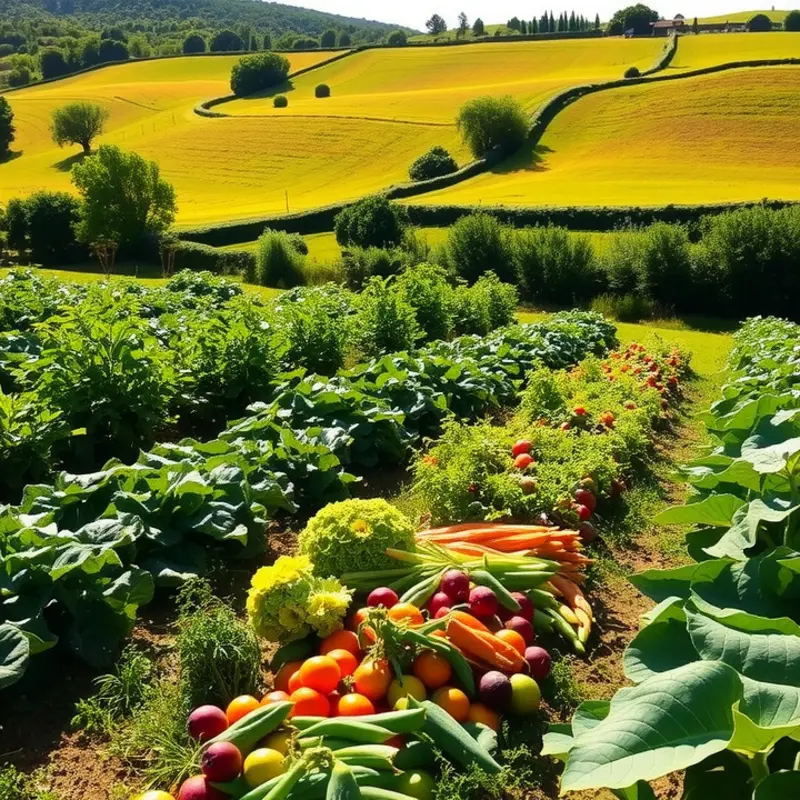Every meal presents a unique opportunity to contribute to a healthier planet. Sustainable eating can seem daunting, with countless choices and practices available. However, simplifying this journey is key to making eco-friendly food decisions that benefit both you and the environment. This guide outlines practical steps to incorporate sustainable eating habits into your daily life, so you can relish every bite while caring for nature.
Understanding Sustainable Eating

Sustainable eating is about making food choices that benefit the environment, society, and your health. It involves understanding how food sourcing, production, and consumption impact the planet. By focusing on sustainable practices, you can reduce your ecological footprint and contribute to a healthier world.
One fundamental principle is sourcing food responsibly. This means opting for locally produced foods when possible. Locally sourced food often requires less transportation, which can reduce emissions and energy consumption. Additionally, buying local supports community farmers and can enhance the resilience of regional food systems.
Seasonal eating is another crucial aspect of sustainable eating. Consuming fruits and vegetables in season means they are harvested at peak ripeness, offering better flavor and higher nutritional value. It also limits the carbon footprint associated with transporting out-of-season produce over long distances. For guidance on storing seasonal produce effectively and reducing waste, check out this article on eco-smart kitchen storage.
Reducing food waste is vital to sustainable eating. Food waste contributes significantly to greenhouse gas emissions, especially when it ends up in landfills. To minimize waste, plan meals carefully, use leftovers creatively, and store food correctly. Simple steps like composting food scraps and donating excess food can make a significant difference in reducing waste.
Small lifestyle changes can lead to substantial impacts. For example, incorporating more plant-based meals into your diet can decrease the demand for resource-intensive animal products. This shift not only benefits your health but also reduces the water, land, and energy needed for food production. Experiment with plant-based recipes and see how delicious sustainable eating can be.
Ultimately, sustainable eating is about making informed choices that prioritize the environment. By being mindful of where your food comes from and how it is produced, you take a step toward a more sustainable future. Each small decision can add up, making a lasting impact on the planet and future generations.
Practical Tips for Everyday Sustainable Eating

Embracing sustainable eating doesn’t have to be overwhelming. With a few practical adjustments, you can nurture an eco-friendly lifestyle that supports both your health and the planet. Here are some actionable steps to integrate sustainable practices into your daily routine.
Choose Local and Seasonal Produce
Opting for local and seasonal produce not only reduces the carbon footprint associated with long-distance food transportation but also supports your local economy. Visit farmers’ markets or subscribe to a community-supported agriculture (CSA) program. By selecting fruits and vegetables that are in season, you enjoy fresher and tastier options.
Practice Thoughtful Meal Planning
Meal planning is a key strategy for minimizing food waste. Design a weekly menu that utilizes ingredients you already have, ensuring nothing goes to waste. Adopt a simple system of batching ingredients to streamline meal prep and reduce the chance of unnecessary purchases. For practical ideas, you can explore minimal prep dinner ideas.
Embrace Plant-Based Meals
While not everyone is ready to switch to a completely plant-based diet, incorporating more plant-based meals into your diet can significantly lower your environmental impact. Start with one plant-based day per week and gradually increase this as you try new, delicious recipes.
Implement Efficient Storage Solutions
Proper food storage extends the shelf life of ingredients and reduces spoilage. Invest in reusable containers and opt for glass or silicone over plastic. Organize your pantry and fridge to ensure older items are used first. Effective food storage practices are instrumental in reducing waste and saving money.
Compost Food Scraps
Composting is an excellent way to repurpose kitchen waste. Set up a small compost bin for food scraps like vegetable peels and eggshells. The compost can later enrich your garden soil. If you don’t have space for a compost pile, explore local composting services or community gardens that accept food waste.
Mindful Consumption and Reducing Portion Sizes
Consider the quantity of food you prepare and serve. Generous portions often lead to leftovers that are forgotten and then disposed of. By serving smaller portions, you can better gauge your appetite and minimize uneaten food. This practice not only combats food waste but is also a step toward mindful eating.
Critically Evaluate Food Labels
Understanding food labels aids in making informed purchasing decisions. Look for labels that indicate eco-friendly practices, such as Fair Trade or Rainforest Alliance certifications. These labels offer insight into the sustainable practices behind your food choices.
These straightforward tips empower you to make sustainable eating a seamless part of your life. Each small action contributes to a larger impact, fostering a healthier planet and lifestyle.
Final words
Sustainable eating is within reach for anyone willing to embrace new habits and make conscious choices. By incorporating simple practices such as choosing local produce, reducing food waste, and being mindful of what you consume, the journey toward sustainability becomes more manageable and enjoyable. Every bite can nourish not only your body but also the planet. Making sustainable choices isn’t just a trend; it’s a commitment to a healthier lifestyle and a brighter future.








